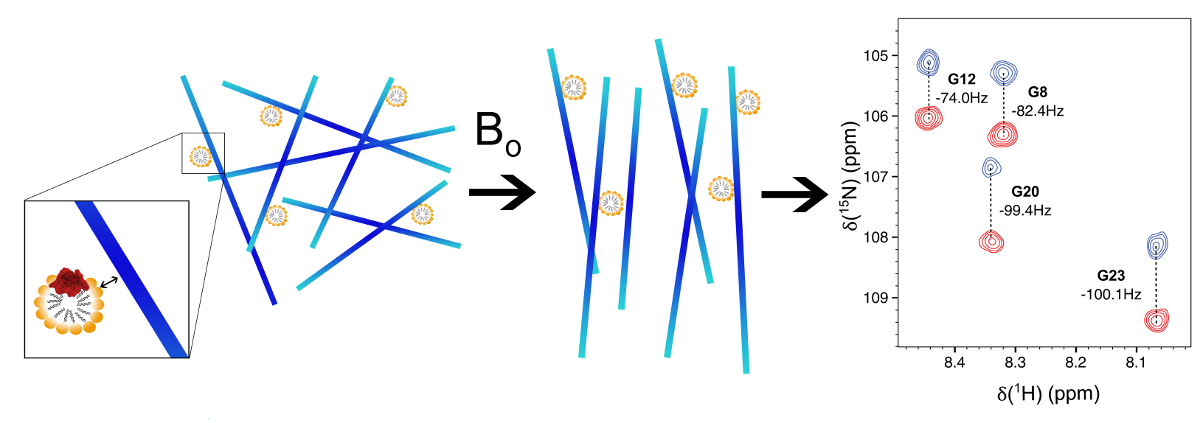A Positively Charged Liquid Crystalline Medium for Measuring Residual Dipolar Couplings in Membrane Proteins by NMR
 Residual Dipolar Couplings (RDCs) are
integral to the refinement of membrane protein structures by NMR since
they accurately define the orientation of helices and other structural
units. Only a small set of liquid crystals used for RDC measurements
are compatible with the detergents needed in membrane protein
studies. The available detergent-compatible liquid crystals are
negatively charged, thus offering effectively only one of five
orthogonal components of the alignment Saupe matrix. In this
communication, we present a robust liquid crystalline medium that is
positively charged, pinacyanol acetate (PNA), for the determination of
orthogonal sets of RDCs in membrane proteins. This new medium promises
to enhance the accuracy of membrane protein structures and the
measurement of dynamics based on RDCs.Residual Dipolar Couplings
(RDCs) are integral to the refinement of membrane protein structures
by NMR since they accurately define the orientation of helices and
other structural units. Only a small set of liquid crystals used for
RDC measurements are compatible with the detergents needed in membrane
protein studies.The available detergent-compatible liquid crystals are
negatively charged, thus offering effectively only one of five
orthogonal components of the alignment Saupe matrix. In this
communication, we present a robust liquid crystalline medium that is
positively charged, pinacyanol acetate (PNA), for the determination of
orthogonal sets of RDCs in membrane proteins. This new medium promises
to enhance the accuracy of membrane protein structures and the
measurement of dynamics based on RDCs.
Residual Dipolar Couplings (RDCs) are
integral to the refinement of membrane protein structures by NMR since
they accurately define the orientation of helices and other structural
units. Only a small set of liquid crystals used for RDC measurements
are compatible with the detergents needed in membrane protein
studies. The available detergent-compatible liquid crystals are
negatively charged, thus offering effectively only one of five
orthogonal components of the alignment Saupe matrix. In this
communication, we present a robust liquid crystalline medium that is
positively charged, pinacyanol acetate (PNA), for the determination of
orthogonal sets of RDCs in membrane proteins. This new medium promises
to enhance the accuracy of membrane protein structures and the
measurement of dynamics based on RDCs.Residual Dipolar Couplings
(RDCs) are integral to the refinement of membrane protein structures
by NMR since they accurately define the orientation of helices and
other structural units. Only a small set of liquid crystals used for
RDC measurements are compatible with the detergents needed in membrane
protein studies.The available detergent-compatible liquid crystals are
negatively charged, thus offering effectively only one of five
orthogonal components of the alignment Saupe matrix. In this
communication, we present a robust liquid crystalline medium that is
positively charged, pinacyanol acetate (PNA), for the determination of
orthogonal sets of RDCs in membrane proteins. This new medium promises
to enhance the accuracy of membrane protein structures and the
measurement of dynamics based on RDCs.